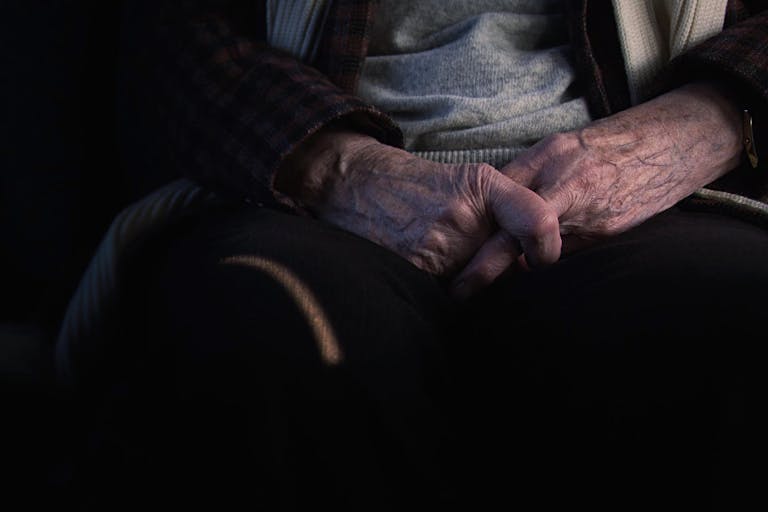
13th annual 'National Day of Remembrance for Aborted Children' was largest ever
Tori Shaw
·
Status of hundreds of Californians receiving assisted suicide drugs is unknown
Assisted suicide data from California indicates that the status of hundreds of people who were given assisted suicide drugs remains unknown — which means the status of the deadly drug cocktails remains unknown as well.
California's annual assisted suicide reports show discrepancies in the number of people receiving approval to die by lethal drug cocktails.
The data also shows that the status of hundreds of patients who received assisted suicide drugs is unknown.
Lack of oversight can cause coercion and mistaken ingestion, as evidence shows.
Alex Schadenberg, executive director of the Euthanasia Prevention Coalition, reviewed assisted suicide data from California and found concerning details:
The data is inaccurate.
Deaths may have been coerced.
Some of the people who were given deadly drugs are unaccounted for.
Schadenberg points out that the data in yearly reports do not match up.
For example, the 2023 assisted suicide report shows 884 reported assisted suicide deaths that year. But the 2024 report noted 969 assisted suicide deaths for 2023. This means 85 deaths were reported too late to be included in the 2023 report, increasing the total number of assisted suicide deaths by nine percent (9%).
In addition, Schadenberg noticed that different reports stated a different number of deaths by assisted suicide for the same year:
The 2022 report indicated 853 assisted suicide deaths in 2022.
The 2023 report indicated 890 assisted suicide deaths in 2022.
The 2024 report indicated 896 assisted suicide deaths in 2022.
Which one of these numbers is correct for 2022?
None of the state's assisted suicide reports appear to be reliable; each year, hundreds of assisted suicide prescriptions go unaccounted for. Either the person's suicide was not reported, or they never took the drugs.
Both possibilities are problematic.
California's 2024 report showed that of the 1,591 people who were given assisted suicide drugs, the status of 388 of those people is unknown.
In the 2023 report, 276 people were given the deadly drugs whose status is currently unknown.
In other words, California does not know what happened to these individuals, if they died, or how they died.
Some may have died naturally. Others may have taken the drugs but their deaths were not reported by doctors. Schadenberg explained:
California uses a self-reporting system, meaning the medical professional who prescribed the poison prescription same person who is obligated to submit the assisted suicide death report.
It is impossible to know that a person died by assisted suicide when the medical professional fails to submit the assisted suicide report and there is no oversight that uncovers unreported assisted suicide deaths.
The state assumes assisted suicide deaths are voluntary or self-administered after the person is given the drugs, but the lack of oversight by medical professionals makes coercion even more possible than it already is.
If the drugs were ingested, who administered them? No one knows — because doctors are not required to be present.
The missing information means the state also doesn't know who took the drugs.
If the person who was prescribed the drugs dies naturally or changes his or her mind, what happens to those drugs? In some cases, they get into the 'wrong hands.'
COLORADO, 2022: EMS workers responded to a call about a 35-year-old man with a possible alcohol overdose. In Colorado, only oral drugs are allowed for assisted death. They found two fully clothed males in a bedroom with their legs hanging over the bed. One was elderly, one was middle-aged. Both were unresponsive with shallow breathing. EMS workers were given a medicine bottle and told, "They drank this!" That person also indicated the older man "should be dead" and the younger "should be alive."
The bottle contained digoxin, diazepam, morphine, amitriptyline, and phenobarbital.
The older man had been approved for assisted suicide and had invited family and friends to be there when he took the deadly cocktail.
As reported by Jems:
After his first swallow, he remarked, 'Man that burns!' The younger man said, 'Let me see,' and then also took a swallow. The attending paramedic directs rescuers to begin ventilating the younger man while requesting evidence of advance directives for the older man.
Care was not rendered to the death with dignity patient because he had a valid Medical Orders for Scope of Treatment (MOST) form stating he wanted no lifesaving measures performed on him. The medication bottle was prescribed to the patient. Hospice was contacted to verify he was a terminally ill patient of theirs. Medical control was also contacted for a consult because this was not a typical call.
COLORADO, 2023: A 37-year-old man in Colorado took a "sip" of his friend's assisted death drugs after the friend said it tasted "bitter."
AUSTRALIA, 2025: A third man in Australia almost died after taking the drugs his partner had just taken to end her life.
All three men ultimately survived, but one nurse commented on X, “My chin is on the floor looking at that list [of drugs]. I’m stunned that anyone could survive that ‘sip.’”
Another tweeted, “Was the attending physician out back having a spliff and a beer? Or are these self-supervised events? Not even a pamphlet telling them not to share their lethal dope with their mates?”
There has been at least one case in which a man did die after taking the assisted suicide drugs meant for his wife. He was the one responsbile for the drugs when they were delivered to their home. But on that same day, his wife was admitted to the hospital for Covid-19. She took the drugs at the hospital and died. The husband was instructed to return the remaining drugs but instead, he took them to end his own life.
When the drugs are delivered to a home and left in the hands of non-medical professionals, what is to stop anyone — even a curious child or a depressed teen — from ingesting them?
Rather than tighten up laws, California legislators just this week enrolled Bill SB 403 to expand the assisted suicide law by erasing its expiration date of January 1, 2031, and making it permanent. The bill does not improve reporting requirements or safety rules.
As has been proven in Canada, as time goes by, assisted suicide laws are inevitably loosened and access expanded to more "qualifying" individuals. Now that assisted suicide is a permanent fixture in California, proponents could make it easier and faster to gain access to the deadly drugs without ensuring oversight.
Live Action News is pro-life news and commentary from a pro-life perspective.
Contact editor@liveaction.org for questions, corrections, or if you are seeking permission to reprint any Live Action News content.
Guest Articles: To submit a guest article to Live Action News, email editor@liveaction.org with an attached Word document of 800-1000 words. Please also attach any photos relevant to your submission if applicable. If your submission is accepted for publication, you will be notified within three weeks. Guest articles are not compensated (see our Open License Agreement). Thank you for your interest in Live Action News!

Tori Shaw
·
Issues
Bridget Sielicki
·
Issues
Angeline Tan
·
Issues
Angeline Tan
·
Pop Culture
Nancy Flanders
·
Issues
Bridget Sielicki
·
Analysis
Nancy Flanders
·
Analysis
Nancy Flanders
·
Human Rights
Nancy Flanders
·
Human Interest
Nancy Flanders
·
Pop Culture
Nancy Flanders
·